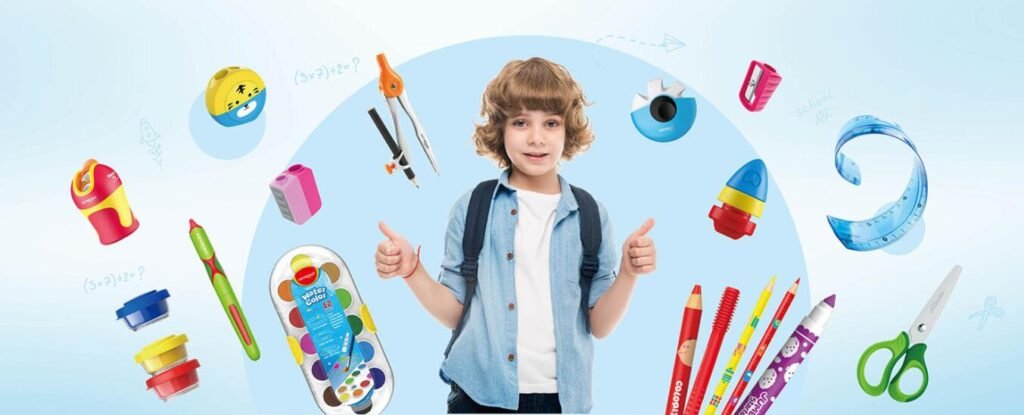When our salesmen receive inquiries from customers daily, a problem appears more frequently: What kind of plastic did you use for your products? Can it pass the test? Eyes may roughly judge it for some senior professional buyers. But now, because of the impact of the Covid-19 epidemic, face-to-face communication is not possible, and more communication is through telephone or video conferences and emails. The delivery of samples is sometimes not timely. So for the whole situation, I have sorted out the various plastics used in our stationery products for your reference.
PP is polypropylene
PP is odorless, tasteless, and non-toxic. It is the lightest kind of resin in everyday use—excellent mechanical properties. Good heat resistance, continuous use temperature can reach 110-120°C. Good chemical stability. It is easy to age and has poor impact strength at low temperatures. It is mainly used in household appliances, chemical construction, and other fields. We usually use PP folders, PP stationery boxes, and desktop office PP sets for the stationery industry.

PE is polyethylene
PE is odorless and non-toxic. Resistant to chemicals, insoluble in solvents at room temperature. Low-temperature resistance, the lowest operating temperature is -70~-100℃: good electrical insulation and low water absorption.
Everyday processed products include wire and cable sheaths, pipes, various hollow products, injection-molded products, fibers, etc., which are mainly used in agriculture, electronics, electrical and other fields. Our solid glue pipe is made of PE material.

PC is polycarbonate
PC is a common material in daily life. It has a colorless and transparent appearance and excellent impact resistance. Typical applications include optical discs, eye lenses, water bottles, bulletproof glass, and goggles, mainly used in firefighting, daily necessities, and other fields. The gel pen tube of the gel pen is made of PC material.

PVC is polyvinyl chloride
The polyvinyl chloride resin is processed and molded to obtain polyvinyl chloride plastic. Low cost, mature production technology, easy processing, and forming. Acid and alkali resistance, abrasion resistance, good electrical insulation, non-burning.
However, thermal stability and light resistance are poor. You were used as a raincoat, table cloth, agricultural seedling raising film, etc., mainly used in manufacturing and agriculture fields. PVC materials are used mainly for badges, erasers, pencil cases, and packaging bags for stationery products. By the way, PVC is also divided into environmentally-friendly PVC and ordinary PVC. Some European and American customers require environmentally-friendly PVC. The price will be higher, so you need to ask clearly when you inquire about the price.

ABS is an acrylonitrile-butadiene-styrene copolymer
ABS is a thermoplastic polymer material with high strength, good toughness, and easy processing and forming. ABS resin is a terpolymer of acrylonitrile, butadiene, and styrene.
It can generally behave in an environment of -25℃~60℃ and has good formability. The processed product has a smooth surface and is easy to dye and electroplating. And it can be compounded with a variety of resins to form a blend. Now it is mainly used in alloys and plastics. Many plastic parts of staplers, pen tubes of ballpoint pens, and office desk sets are all in ABS. The price is much higher than PP.

PS is polystyrene
Polystyrene refers to a polymer synthesized from a styrene monomer through radical addition polymerization. It is a colorless and transparent thermoplastic with a glass transition temperature higher than 100°C. They are mainly used as audio and video products and CD boxes, lamps, and interior decoration parts. In terms of stationery, it is most commonly used for rulers, utility knives, ballpoint pens, gel pens, watercolor pens, pencil sharpeners, etc.

In addition, HIPS, ABS, PET, RPET, etc., are plastic materials commonly used in stationery products.
HIPS stands for high-impact polystyrene. Various grades of high-impact polystyrene with different properties can be produced by adding rubber to the polystyrene substrate. The outstanding characteristics of impact-resistant polystyrene are easy processing, excellent dimensional stability, high impact strength, and high rigidity. For HIPS, it is only in heat resistance. There are certain limits in oxygen permeability, UV stability, and oil resistance.
Our company has developed a complete set of desktop office products made of HIPS material-Lucky8 series, mid-to-high-end stationery products. Some professional customers have already placed orders.

AS, PET, and RPET will not be introduced one by one. If you come across stationery products and want to know the material, you should have a detailed understanding after going through this article.
As last, if you want to share with me about your information about this, you are warmly welcome to contact me by Linkedin or even by email(yinsha@johnshen.com.cn).



2 Responses
Nice!
Tks Martin!